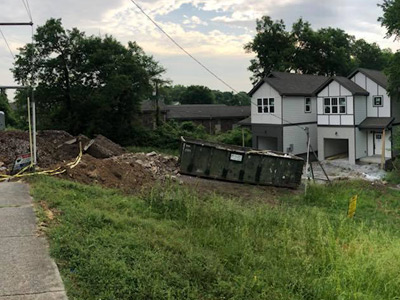- Home
- Blog
- Residential Demolition: Steps to Safely Tear Down Structures
Residential Demolition: Steps to Safely Tear Down Structures
 Tearing down a structure involves numerous safety considerations, compliance with local regulations, and specialized techniques to prevent accidents or environmental harm. Gibbs Excavating & Grading provides secure and professional demotion services. Understanding the essential steps of a safe demolition process ensures the project is efficient and minimizes potential risks. These are the steps to tear down structures safely:
Tearing down a structure involves numerous safety considerations, compliance with local regulations, and specialized techniques to prevent accidents or environmental harm. Gibbs Excavating & Grading provides secure and professional demotion services. Understanding the essential steps of a safe demolition process ensures the project is efficient and minimizes potential risks. These are the steps to tear down structures safely:
1. Initial Planning and Assessment
Before any demolition begins, thorough planning is essential, and this includes the following steps:
- Evaluate the Structure - Conduct a detailed inspection to assess the building's condition, identify hazardous materials like asbestos, and determine the best demolition approach.
- Obtain Necessary Permits - Secure permits required by local authorities to ensure the demolition complies with building codes and regulations.
- Create a Demolition Plan - Develop a clear strategy outlining the work sequence, equipment needed, and safety measures.
2. Disconnect Utilities
Shutting off utilities is a critical step to ensure safety during the demolition process that covers:
- Electricity and Gas - Disconnect power and gas lines to prevent fire or explosion risks.
- Water Supply - Turn off the water supply and cap pipes to avoid flooding or water damage.
- Communication Lines - Safeguard phone, internet, and cable lines to prevent interruptions to surrounding properties.
3. Clear The Area
A clutter-free environment minimizes accidents and facilitates efficient work and you should:
- Remove Personal Belongings - Clear out furniture, appliances, and other items from the structure.
- Erect Safety Barriers – Install fences, warning signs, and barriers to keep unauthorized individuals out of the demolition zone.
- Plan Waste Disposal - Arrange for dumpsters or trucks to remove debris and ensure proper waste management.
4. Demolition Execution
The actual demolition process requires skilled labor and the right tools based on the process:
- Manual Demolition - Use handheld tools like hammers and saws for smaller structures or areas requiring precision.
- Mechanical Demolition - Employ heavy equipment such as excavators, bulldozers, and wrecking balls to demolish larger or sturdier buildings.
- Controlled Demolition - Implement controlled techniques for safe dismantling, especially in urban areas where neighboring structures are close.
5. Debris Removal and Site Cleanup
Clearing the site is a crucial post-demolition step, which includes the following:
- Sort and Recycle Materials - Separate recyclable materials like metal, wood, and concrete to minimize environmental impact.
- Dispose of Hazardous Waste - Follow regulations for the safe disposal of materials like asbestos or lead paint.
- Prepare the Site - Level and grade the area to make it ready for future construction or landscaping.
Work With Certified Demolition Experts
Residential demolition is a complex task that demands the expertise of skilled and certified professionals. Certified contractors ensure compliance with regulations, adhere to safety protocols, and utilize the best tools for efficient and precise work. They also address potential risks, such as hazardous material removal and structural instability, providing peace of mind. Working with experienced demolition experts guarantees the project is completed on time, within budget, and with minimal disruption to your property and surroundings.
For professional and reliable residential demolition services, please call Gibbs Excavating & Grading at 615-419-245.
You can also send us your hydroseeding requirements via this Online Form, and we will respond soon.

 Tearing down a structure involves numerous safety considerations, compliance with local regulations, and specialized techniques to prevent accidents or environmental harm. Gibbs Excavating & Grading provides secure and professional demotion services. Understanding the essential steps of a safe
Tearing down a structure involves numerous safety considerations, compliance with local regulations, and specialized techniques to prevent accidents or environmental harm. Gibbs Excavating & Grading provides secure and professional demotion services. Understanding the essential steps of a safe 